- Home
- Joyce Carol Oates
Soul at the White Heat Page 6
Soul at the White Heat Read online
Page 6
CHARLES DICKENS: A LIFE:
CLAIRE TOMALIN
The life of any man possessing great
gifts, would be a sad book to himself.
CHARLES DICKENS, 1869
Is Dickens the greatest of English novelists? Few would contest that he is the most English of great English novelists, and that his most accomplished novels, Bleak House, Great Expectations, Little Dorrit, Dombey and Son, Our Mutual Friend, David Copperfield, are works of surpassing genius, thrumming with energy, imagination, and something resembling white-hot inspiration; his gift for portraiture is arguably as great as Shakespeare’s, and his versatility as a prose stylist is dazzling, as in this famous opening of Bleak House:
London. Michaelmas Term lately over, and the Lord Chancellor sitting in Lincoln’s Inn Hall. Implacable November weather. As much mud in the streets, as if the waters had but newly retired from the face of the earth, and it would not be wonderful to meet a Megalosaurus, fifty feet long or so, waddling like an elephantine lizard up Holborn Hill. Smoke lowering down from chimney-pots, making a soft black drizzle, with flakes of soot in it as big as full-grown snow-flakes—gone into mourning, one might imagine, for the death of the sun. . . . Fog everywhere. Fog up the river, where it flows among green aits and meadows; fog down the river, where it rolls defiled among the tiers of shipping, and the waterside pollutions of a great (and dirty) city. Fog on the Essex marshes, fog on the Kentish heights.
And, equally characteristic of Dickens, a chapter opening in the lesser-regarded and uncompleted The Mystery of Edwin Drood in which a natural observation acquires a portentous metaphoric significance:
Whosoever has observed that sedate and clerical bird, the rook, may perhaps have noticed that when he wings his way homeward towards nightfall, in a sedate and clerical company, two rooks will suddenly detach themselves from the rest, will retrace their flight for some distance, and will there poise and linger; conveying to men the fancy that it is of some occult importance to the body politic, that this artful couple should pretend to have renounced connection with it.
Irresistibly the reader is drawn into the voice—exquisitely lyric, yet with a profound melancholy beneath—of the child Philip Pirrip—“Pip”—of Great Expectations:
Ours was the marsh country, down by the river, within, as the river wound, twenty miles of the sea. My first most vivid and broad impression of the identity of things, seems to me to have been gained on a memorable raw afternoon towards evening. At such a time I found out for certain, that this bleak place overgrown with nettles was the churchyard; and that Philip Pirrip, late of this parish, and also Georgiana wife of the above, were dead and buried; and that Alexander, Bartholomew, Abraham, Tobias, and Roger, infant children of the aforesaid, were also dead and buried; and that the dark flat wilderness beyond the churchyard, intersected with dykes and mounds and gates, with scattered cattle feeding on it, was the marshes; and that the low leaden line beyond, was the river; and that the distant savage lair from which the wind was rushing, was the sea; and that the small bundle of shivers growing afraid of it all and beginning to cry, was Pip.
Dickens is so brilliant a stylist, his vision of the world so idiosyncratic and yet so compelling, one might say that his subject is his unique rendering of his subject, in an echo of Mark Rothko’s statement, “The subject of the painting is the painting”—except of course, Dickens’s great subject was nothing so subjective nor so exclusionary, but as much of the world as he could render. If Dickens’s prose fiction has “defects”—excesses of melodrama, sentimentality, contrived plots and manufactured happy endings—these are the defects of his era, which for all his greatness Dickens had not the rebellious spirit to resist; he was at heart a crowd-pleaser, a theatrical entertainer, with no interest in subverting the conventions of the novel as his great successors D. H. Lawrence, James Joyce, and Virginia Woolf would have; nor did he contemplate the subtle and ironic counterminings of human relations in the way of George Eliot and Thomas Hardy, who brought to the English novel an element of nuanced psychological realism not previously explored. Yet among English writers Dickens is, as he once called himself, part-jesting and part-serious, “the Inimitable.”
EQUIPPED WITH PERIOD MAPS of Gad’s Hill and Rochester (where Charles Dickens lived as a young child, from 1817 to 1822), Central London, and North London, an enormous cast of characters (relatives, friends, and acquaintances of Dickens spanning his lifetime), a generous gathering of photographs, and, in an appendix, a small selection of letters by Charles Dickens, Claire Tomalin’s enormously ambitious biography of Charles Dickens begins in medias res in a dramatically rendered Prologue titled “The Inimitable: 1840.” As in a Dickens novel, we are introduced to the twenty-eight-year-old householder as he takes his place on a jury convened by the Marylebone beadle to determine the probable guilt or innocence of a servant girl accused of infanticide. The narrative is present tense: the mood is suspenseful. We see the new young Marylebone resident Charles Dickens in his role as a responsible citizen, involving himself in the inquest with a hope of giving a “favorable turn to the case”: “Dickens resolves to take on those who are ready to find her guilty of killing her child, and . . . he argues against them, so firmly and forcefully that he wins the argument.” Not only does Dickens assure that the girl won’t be vulnerable to a sentence of death, but he hires a lawyer for her and makes arrangements for her to be treated humanely as she awaits her trial in prison. In a narrative sleight of hand the biographer takes up Dickens’s story from the perspective of a letter of his to a friend, telling of the troubling episode and its effect upon him. Tomalin notes that, twenty-three years later, the memory of the servant-girl charged with infanticide was still fresh to Dickens: “This is a very small episode in the life of Dickens, but it allows us to see him in action. . . . He is at his best as a man, determined in argument, generous in giving help . . . motivated by his profound sense that it was wrong that [the accused] should be victimized further.”
What is impressive about Dickens’s involvement in this case is that, in January 1840, the young author was leading a highly public, intense, and complicated life. In the past four years he’d written three commercially successful long novels (The Pickwick Papers, Oliver Twist, The Old Curiosity Shop) under the pressure of monthly installments; theatrical dramatizations were made of his work throughout England; “his success was unprecedented and thrilling”—but exhausting. Though he had no savings and lived from month to month, he’d already acquired a substantial household with a wife, young children, and family dependents as well as servants; he was an indefatigable giver of parties, an amateur actor, and a compulsive walker—his “expeditions” were often as many as twenty miles out of town. Here is a man over-committing himself to projects and responsibilities out of an insatiable interior restlessness that would leave him burnt out and exhausted in his fifty-ninth year. Like Honoré Balzac and Jack London, fellow obsessives and best-selling writers, Charles Dickens was a man of outsized energy, appetite, and ambition who in Tomalin’s words “worked fast to give himself free time.” It was said of him by an observer that he gave off “a sort of brilliance in the room, mysteriously dominant and formless. I remember how everyone lighted up when he entered.”
The “most mysterious figure in Dickens’s background”—in Tomalin’s’ words—is his father, John Dickens, who was twenty-seven when Dickens was born. The son of servants of a “grand household,” John Dickens’s ambitions lay beyond such service; at a young age, he secured a position in the Navy Pay Office in London that would pay him “a fortune compared with anything his (butler) father had ever earned.” (Why was John Dickens so favored, and so careless with money through his life? Tomalin suggests that he may have been the illegitimate son of his father’s employer or one of his gentlemen friends.) He owned a considerable library of “expensive” books, to which his son Charles would eventually be exposed; he was a “character”—“the model for his son’s most famous character, Micawber.”
Through the decades Tomalin pursues the thread of John Dickens’s relationship with his son who, as he ascends in fame, wealth, and influence, is yet burdened with his Micawber-father’s feckless behavior and his confidence that Charles would pay his debts. (As indeed Charles paid his father’s, his brother’s, and eventually his numerous sons’ debts, in exasperation, and repeatedly.)1
The great drama—which is to say, the abiding trauma—of Dickens’s childhood was his year-long stint in a rat-infested blacking factory near the Thames, when he was twelve years old, following the arrest of John Dickens for debt in 1824 and his incarceration in the debtors’ prison at Marshalsea. Much has been written about this long-secret episode in Dickens’s life, including, most recently, the heavily documented Charles Dickens and the Blacking Factory by Michael Allen, a work of nearly three hundred pages of interest primarily to Dickens scholars, but very likely impenetrable to Dickens readers in its concentration upon historical minutiae only tenuously related to Dickens and his novels; see also Dickens & the Workhouse: Oliver Twist and the London Poor by Ruth Richardson, for a more intimately evoked view of Dickens’s childhood and the New Poor Law of 1834 by which workhouses became “a sort of prison system to punish (the poor).” For the child Dickens, the shock of this change of fortune was all the more in that his seemingly loving parents so readily agreed to the enslavement of their bright young son: “No one made any sign. My father and mother were quite satisfied. They could hardly have been more so, if I’d been twenty years of age, distinguished at a grammar-school, and going to Cambridge.” At the factory—which manufactured blacking for men’s and boys’ boots—Dickens had a relatively light job, covering and labeling the pots of blacking; he was known there as “the young gentlemen”; but the horror of his situation never altered: “No words can express the secret agony of my soul . . . the sense I had of being utterly neglected and hopeless; of the shame I felt in my position. . . . My whole nature was penetrated with grief and humiliation.” And when Dickens was released from his servitude, neither his father nor his mother ever spoke of the blacking factory again: “From that hour . . . my father and mother have been stricken dumb upon it. I have never heard the least allusion to it, however far off or remote, from either of them.” His parents’ betrayal was unforgivable, and his year in the factory humiliating, yet, twenty years later, recounting the episode to his first biographer, his beloved friend John Forster, Dickens acknowledged that the blacking factory had given him the determination to persevere, with “a sense that everything was possible to the will that would make it so.” And, of course, servitude as a child-worker would provide the author with both material and a sharply informed perspective as well as a natural empathy for the enslaved working poor of all ages, that remained with Dickens through his life.
Surprisingly, Dickens wasn’t an outstanding student at even the mediocre Wellington House Academy to which his parents eventually sent him; when his father couldn’t any longer pay his tuition, Dickens’s formal education ended at fifteen, at which time he began to be a “serious smoker”—an addiction that would grip Dickens through his life, and was very likely a factor in his premature death. Dickens’s first employment was in a law office; his early interest in the law soon dissipated, as he began to write and to publish—initially, as an ecclesiastical reporter, then as reporter at the Morning Chronicle, where the blithely composed sketches of London scenes by “Boz” began to appear, and to attract a wide readership. Soon, the energetic young writer was covering politics and elections for the newspaper, even as he was assembling Sketches by Boz (1836), and publishing the Pickwick Papers in monthly installments, which quickly became a best seller. He was soon to become involved with the theater and with performing as an amateur actor. He turned down several invitations to stand for Parliament.
By this time Dickens had fallen in love desperately, and been rejected, by an “enchantingly pretty” young woman named Maria Beadnell; he was eighteen, and Maria twenty; his intense romantic feeling for Maria wasn’t requited, and Dickens was, by his account, at the time and many years later, devastated. The “wasted tenderness” of those hard years caused him to suppress emotion, he said, “which I know is no part of my original nature, but which makes me chary of showing my affections, even to my children.” Maria Beadnell is immortalized in two portraits in Dickens’s fiction: as the pretty feather-headed Dora of David Copperfield (1850), who dies young; and the fat, fatuous, garrulous middle-aged Flora Finching of Little Dorrit (1857).2
Despite the cruelty of his parents and his father’s chronic irresponsibility, like any Victorian Dickens seems to have conceived of family life as an ideal. Still besotted with Maria Beadnell, he quickly decided to marry Catherine Hogarth, the daughter of his newspaper employer, within six months of meeting her in 1835, an impulsive decision which he came to regard as “the worst decision” of his life. Though Dickens would impregnate Catherine more than ten times, resulting in a daunting number of children both loved and not-so-loved by their father, in a way that strikes the contemporary reader as outrageously and obtusely sexist Dickens seems to have blamed his wife for their numerous progeny, as if this plain, placid, passive woman had been a siren to tempt her husband into sexual intercourse against his will.3 Casually and belatedly, after having sired ten children, Dickens remarked that he had not wanted “more than three children.” Not so casually, and cruelly, in the final year of his life he would speak and write of his ill-suited marriage as a “skeleton in the closet”; luckless Catherine, cast aside by her husband when, at the age of forty-six, he fell in love with the eighteen-year-old actress Ellen Ternan, was transformed in Dickens’s imagination into that most horrific of Victorian villainesses—the unmotherly mother: “She does not—and she never did—care for the children; and the children do not—and they never did—care for her. . . . I want to forgive and forget her.” [“A Selection of Letters,” in Tomalin, under the title “A Skeleton in a Closet”] Yet Dickens never divorced Catherine, for divorce would have been a scandal for one of Dickens’s presumed moral stature; pragmatically, if perhaps hypocritically, he lived with Nelly Ternan until his death, in quasi-secret locations, sometimes under the name “Charles Tringham.” But amid the myriad entanglements of his life Dickens never ceased writing—not only his fiction but his extraordinary letters, estimated to be beyond fourteen thousand4—and, with ever-increasing compulsion in the last decade of his life, giving “paid readings” of his work to large, adoring audiences in both the U.K. and in the United States.
The vicissitudes of Dickens’s visits to the United States are tracked in detail in Tomalin’s biography, suggesting a curious admixture of innocent authorly vanity, a shrewd desire to make as much money as possible, and what comes to seem to the reader a malignant, ever-metastasizing desire for self-destruction. Dickens’s delight in his massive and uncritical audiences shifts by degrees to an addiction to public performing; like Mark Twain, Dickens quickly came to see that public performance paid more than writing, and was much easier, at least in the short run. Dickens’s greed for the immediate gratification of public performing is both tonic and masochistic; consumed by vanity, the celebrated writer is consuming his very self. In 1868 the exhausted author would write triumphantly in a letter to one of his daughters:
I not only read last Friday, when I was doubtful of being able to do so, but read as I never did before, and astonished the audience quite as much as myself. You never saw or heard such a scene of excitement.
One must not think that Dickens was reading “authentic” Dickens to these mass audiences. Instead, yielding to the predilection for emotional hysteria among his fans, Dickens prepared “scripts” showcasing his and his audience’s favorite characters—Micawber, Dora, Little Em’ly, Steerforth, Mrs. Gamp, Bill Sikes and his victim Nancy; half of the readings were from inferior Christmas stories, though A Christmas Carol was always a favorite. (Dickens read the lurid murder of Nancy by Sikes twenty-eight times between January 1869 and March 1870, �
�exciting and horrifying his audiences.”) In America, Henry James, possibly rebuked by the sheer size and volume of the rival-novelist’s crowds, spoke of Dickens’s “hard charmless readings”; decades later Edmund Wilson summed up the phenomenon succinctly: “Dickens had a strain of the ham in him, and in the desperation of his later life, he gave in to the old ham and let him rip.”
When, in 1842, the much-acclaimed author of Oliver Twist, Nicholas Nickleby (1839), The Old Curiosity Shop (1841) and Barnaby Rudge (1841) went to America for the first time, though lionized by the gentry and swooned-over by audiences—(“People eat him here,” an observer remarked)—he found America, on the whole, disappointing; and American publishers, who had been pirating his novels for years with impunity, intransigent on the matter of honoring international copyright. Despite ecstatic receptions in Boston and New York City (where a “Boz Ball” with some three thousand paying guests was arranged to celebrate Dickens like visiting royalty as Dickens was presented on the arm of a U.S. army general in full-dress uniform and Catherine was escorted by the mayor of the city in a grand march twice around the ballroom), Dickens was not impressed with the United States: he was repelled by the slave state of Virginia, and thought the Mississippi River “the beastliest river in the world”; Ohio was a region of “invariably morose, sullen, clownish, and repulsive (individuals) . . . destitute of humor, vivacity, or the capacity of enjoyment.” He wrote to his friend John Forster, “I don’t like the country. I would not live here, on any consideration. It goes against the grain with me. I think it is impossible, utterly impossible, for any Englishman to live here, and be happy.” He found here “follies, vices, disappointments.” Nor was Toronto, Ontario, any improvement, for there “the wild and rabid toryism . . . is . . . appalling.” Unexpectedly, Dickens thought Cincinnati a “very beautiful” city —unfortunately, populated by “bores.” Niagara Falls evoked rhapsodic emotions, perhaps predictably: “It would be hard for a man to stand nearer to God than he does there.” But there was nothing romantic about the continued defiance of American publishers, who not only refused to pay the author royalties for the many thousands of his books which they sold, but took offense that the author should expect any recompense at all. America was “a low, coarse, and mean Nation driven by a herd of rascals. Pah! I never knew what it was to feel disgust and contempt, ’till I travelled in America.” (Tomalin notes that international copyright was not sorted out until 1891, long after Dickens’s death.) Dickens’s American Notes appeared soon after the trip, a haphazard assemblage of sardonic observations and unmediated rancor—as Edgar Allan Poe called it, “One of the most suicidal productions, ever deliberately published by an author, who had the least reputation to lose.”

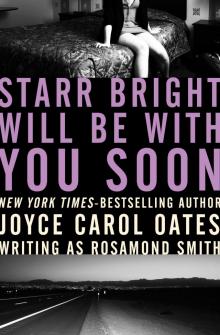 Starr Bright Will Be With You Soon
Starr Bright Will Be With You Soon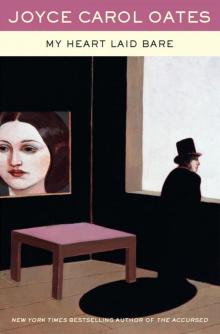 My Heart Laid Bare
My Heart Laid Bare A Fair Maiden
A Fair Maiden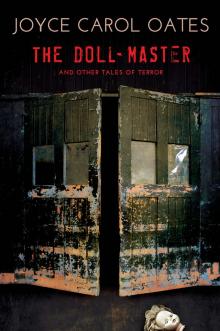 The Doll-Master and Other Tales of Terror
The Doll-Master and Other Tales of Terror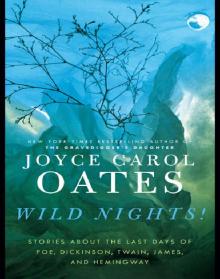 Wild Nights!: Stories About the Last Days of Poe, Dickinson, Twain, James, and Hemingway
Wild Nights!: Stories About the Last Days of Poe, Dickinson, Twain, James, and Hemingway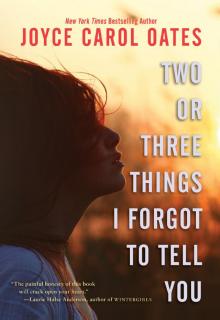 Two or Three Things I Forgot to Tell You
Two or Three Things I Forgot to Tell You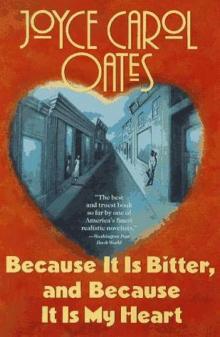 Because It Is Bitter, and Because It Is My Heart
Because It Is Bitter, and Because It Is My Heart Missing Mom: A Novel
Missing Mom: A Novel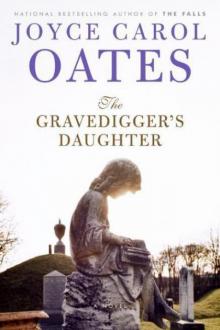 The Gravedigger's Daughter: A Novel
The Gravedigger's Daughter: A Novel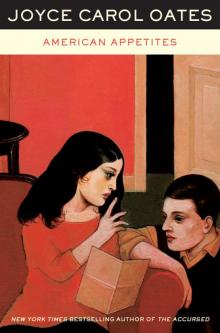 American Appetites
American Appetites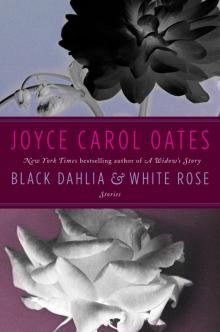 Black Dahlia White Rose: Stories
Black Dahlia White Rose: Stories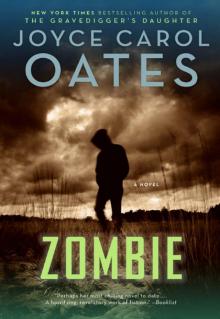 Zombie
Zombie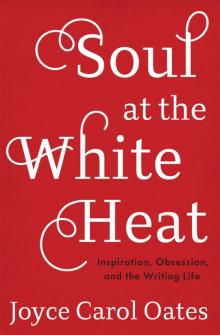 Soul at the White Heat: Inspiration, Obsession, and the Writing Life
Soul at the White Heat: Inspiration, Obsession, and the Writing Life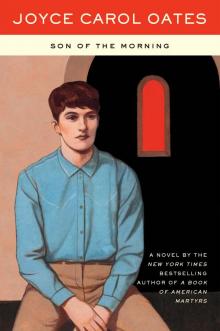 Son of the Morning
Son of the Morning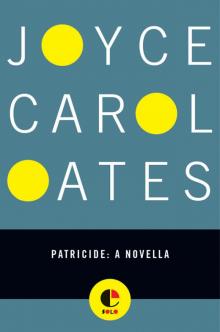 Patricide
Patricide Snake Eyes
Snake Eyes Wonderland
Wonderland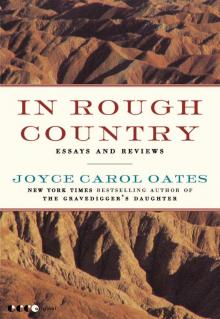 In Rough Country: Essays and Reviews
In Rough Country: Essays and Reviews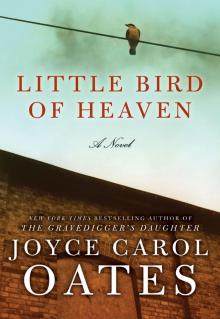 Little Bird of Heaven
Little Bird of Heaven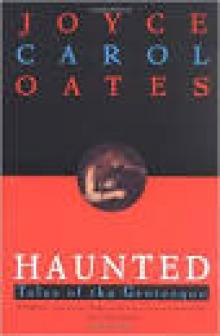 The Haunting
The Haunting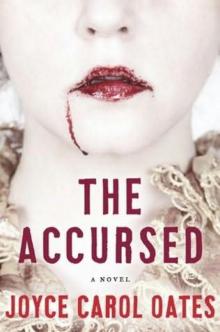 The Accursed
The Accursed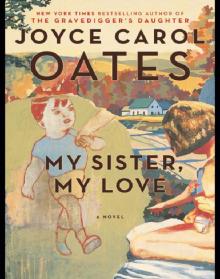 My Sister, My Love: The Intimate Story of Skyler Rampike
My Sister, My Love: The Intimate Story of Skyler Rampike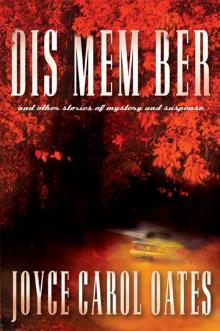 Dis Mem Ber and Other Stories of Mystery and Suspense
Dis Mem Ber and Other Stories of Mystery and Suspense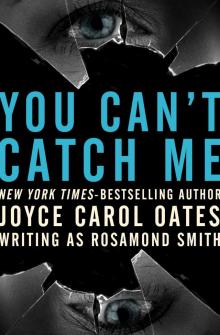 You Can't Catch Me
You Can't Catch Me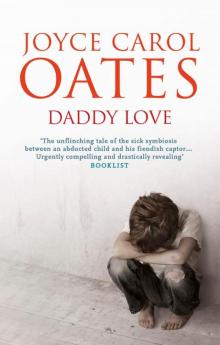 Daddy Love: A Novel
Daddy Love: A Novel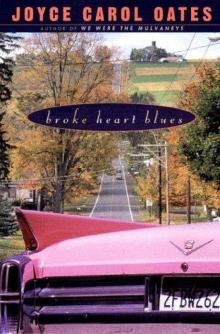 Broke Heart Blues
Broke Heart Blues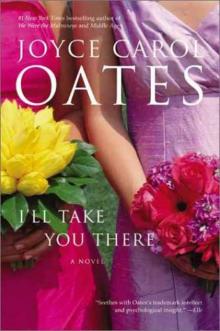 I'll Take You There
I'll Take You There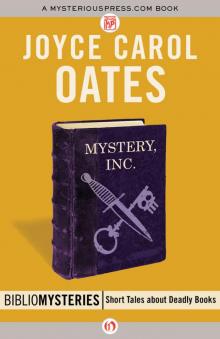 Mystery, Inc.
Mystery, Inc. We Were The Mulvaneys
We Were The Mulvaneys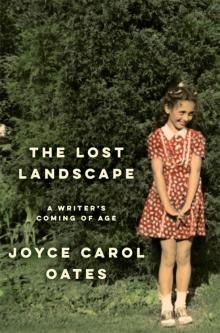 The Lost Landscape: A Writer's Coming of Age
The Lost Landscape: A Writer's Coming of Age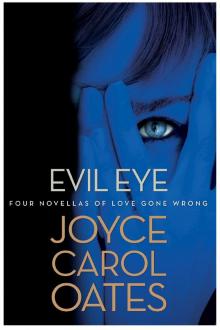 Evil Eye: Four Novellas of Love Gone Wrong
Evil Eye: Four Novellas of Love Gone Wrong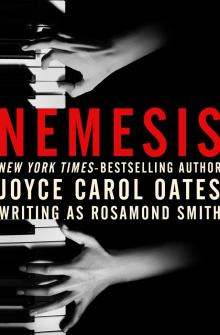 Nemesis
Nemesis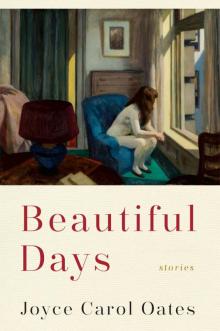 Beautiful Days: Stories
Beautiful Days: Stories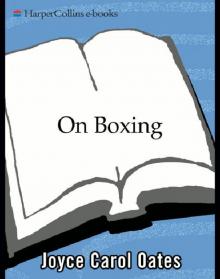 On Boxing
On Boxing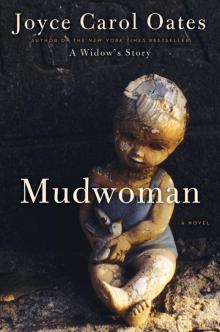 Mudwoman
Mudwoman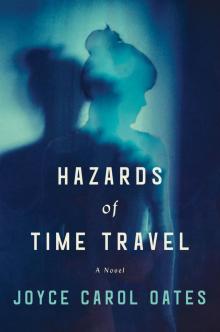 Hazards of Time Travel
Hazards of Time Travel Night-Gaunts and Other Tales of Suspense
Night-Gaunts and Other Tales of Suspense Mysteries of Winterthurn
Mysteries of Winterthurn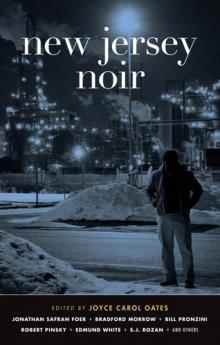 New Jersey Noir
New Jersey Noir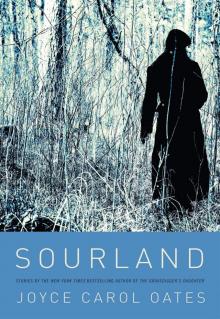 Sourland
Sourland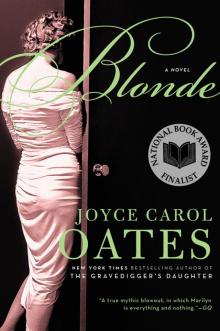 Blonde
Blonde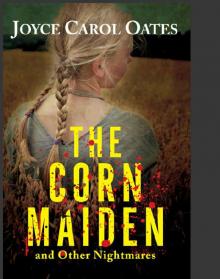 The Corn Maiden: And Other Nightmares
The Corn Maiden: And Other Nightmares The Oxford Book of American Short Stories
The Oxford Book of American Short Stories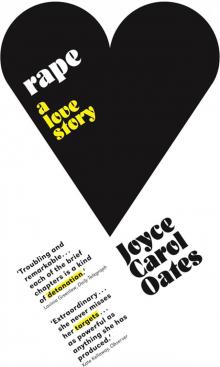 Rape: A Love Story
Rape: A Love Story Lovely, Dark, Deep: Stories
Lovely, Dark, Deep: Stories After the Wreck, I Picked Myself Up, Spread My Wings, and Flew Away
After the Wreck, I Picked Myself Up, Spread My Wings, and Flew Away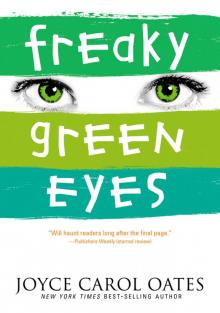 Freaky Green Eyes
Freaky Green Eyes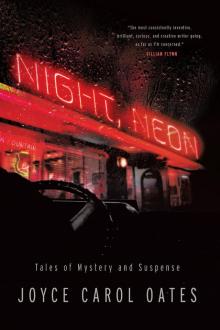 Night, Neon
Night, Neon I Am No One You Know: And Other Stories
I Am No One You Know: And Other Stories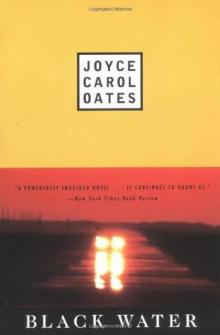 Black Water
Black Water Expensive People
Expensive People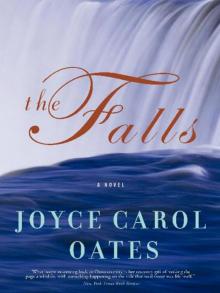 The Falls
The Falls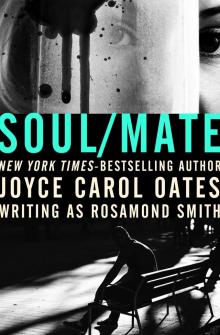 Soul/Mate
Soul/Mate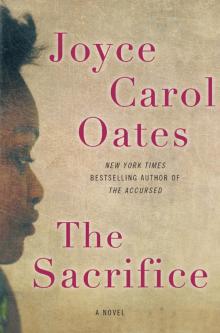 The Sacrifice
The Sacrifice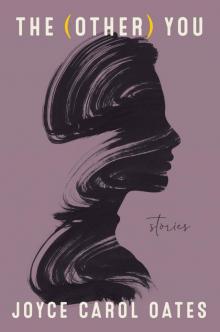 The (Other) You
The (Other) You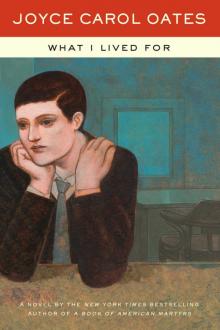 What I Lived For
What I Lived For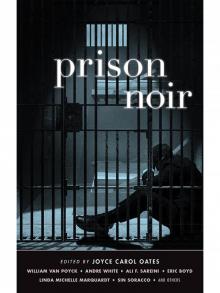 Prison Noir
Prison Noir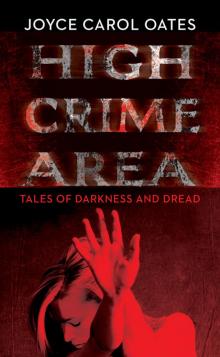 High Crime Area: Tales of Darkness and Dread
High Crime Area: Tales of Darkness and Dread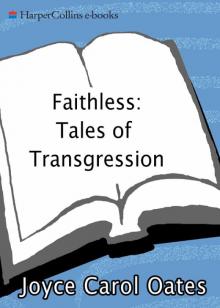 Faithless: Tales of Transgression
Faithless: Tales of Transgression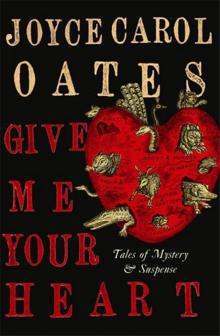 Give Me Your Heart: Tales of Mystery and Suspense
Give Me Your Heart: Tales of Mystery and Suspense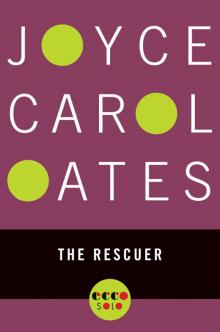 The Rescuer
The Rescuer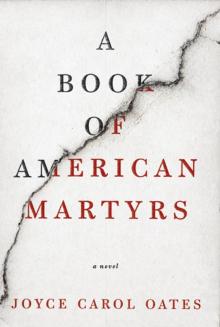 A Book of American Martyrs
A Book of American Martyrs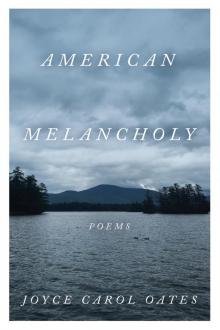 American Melancholy
American Melancholy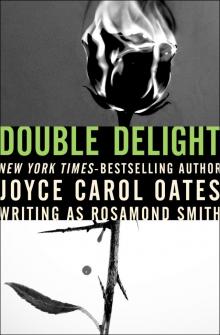 Double Delight
Double Delight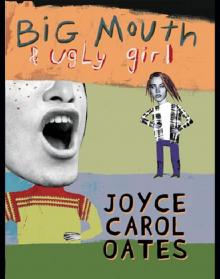 Big Mouth Ugly Girl
Big Mouth Ugly Girl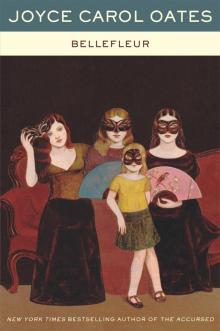 Bellefleur
Bellefleur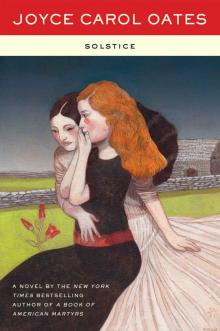 Solstice
Solstice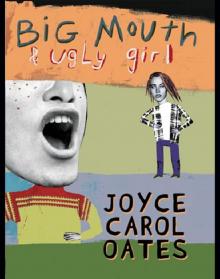 Big Mouth & Ugly Girl
Big Mouth & Ugly Girl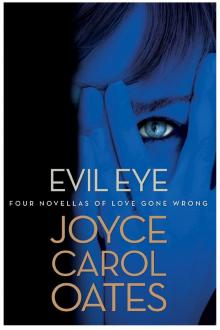 Evil Eye
Evil Eye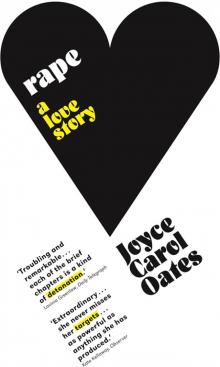 Rape
Rape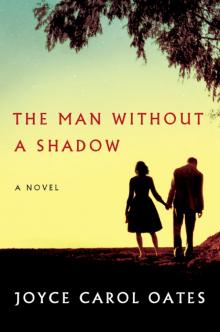 The Man Without a Shadow
The Man Without a Shadow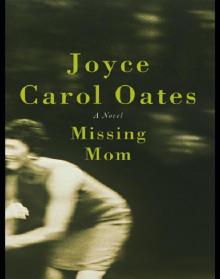 Missing Mom
Missing Mom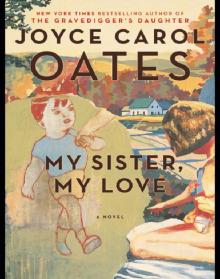 My Sister, My Love
My Sister, My Love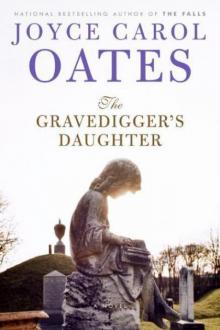 The Gravedigger's Daughter
The Gravedigger's Daughter Beautiful Days
Beautiful Days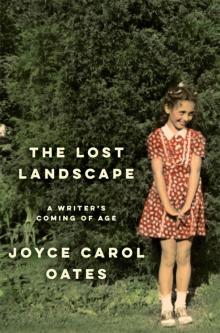 The Lost Landscape
The Lost Landscape Daddy Love
Daddy Love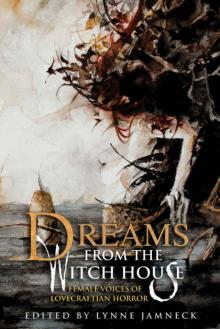 Dreams from the Witch House: Female Voices of Lovecraftian Horror
Dreams from the Witch House: Female Voices of Lovecraftian Horror The Tattooed Girl
The Tattooed Girl Give Me Your Heart
Give Me Your Heart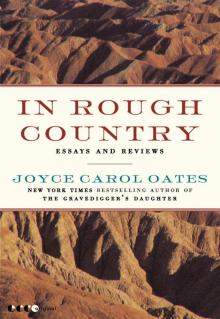 In Rough Country
In Rough Country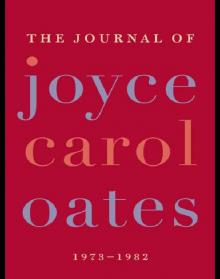 The Journal of Joyce Carol Oates
The Journal of Joyce Carol Oates Black Dahlia & White Rose: Stories
Black Dahlia & White Rose: Stories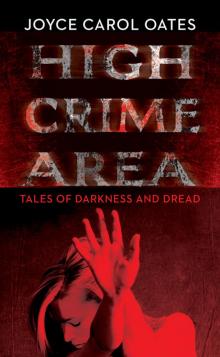 High Crime Area
High Crime Area Lovely, Dark, Deep
Lovely, Dark, Deep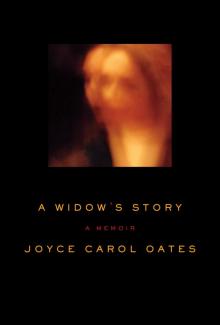 A Widow's Story
A Widow's Story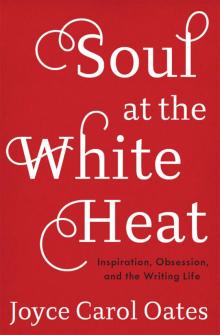 Soul at the White Heat
Soul at the White Heat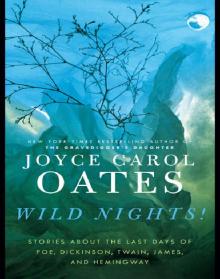 Wild Nights!
Wild Nights!